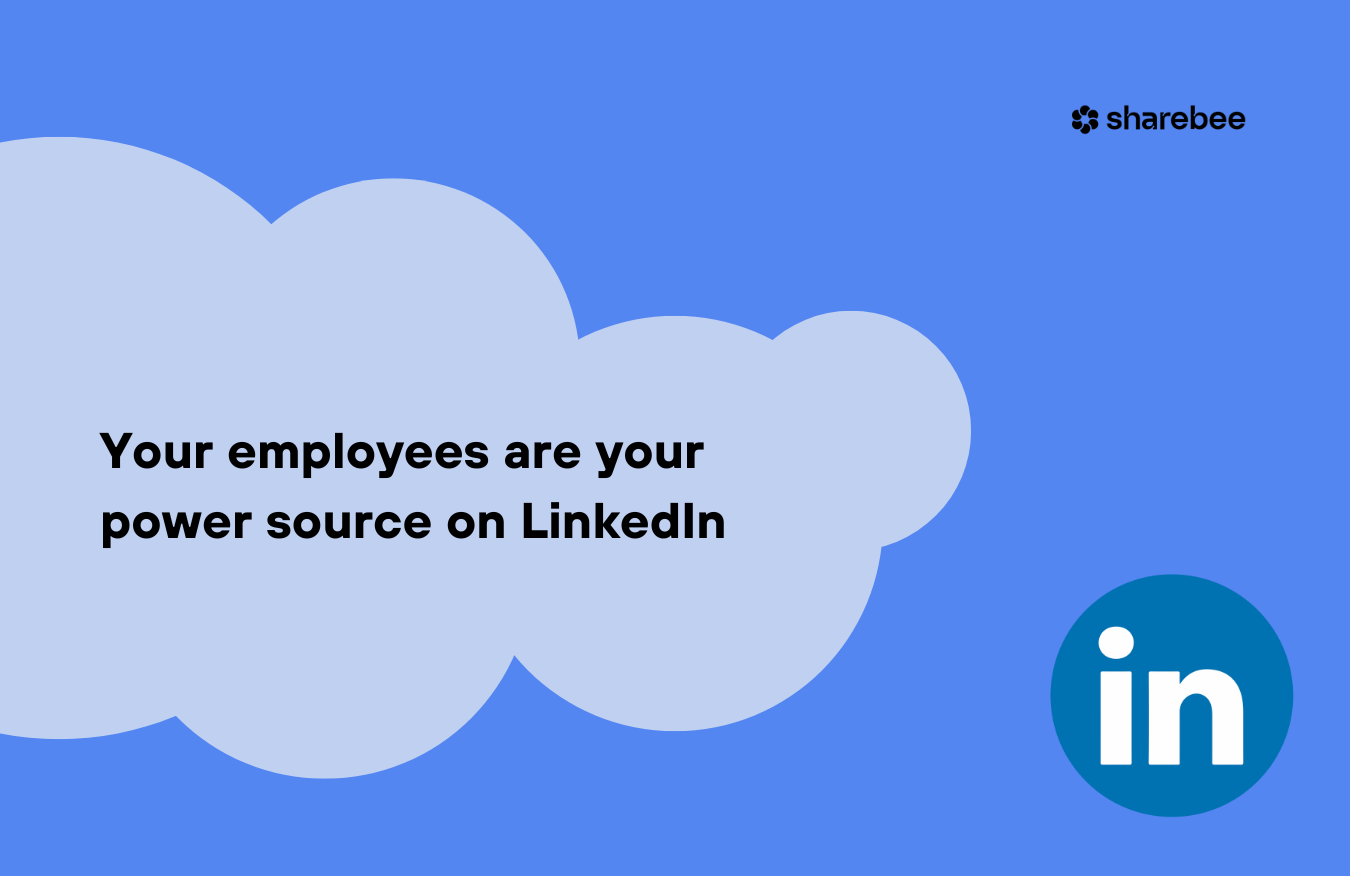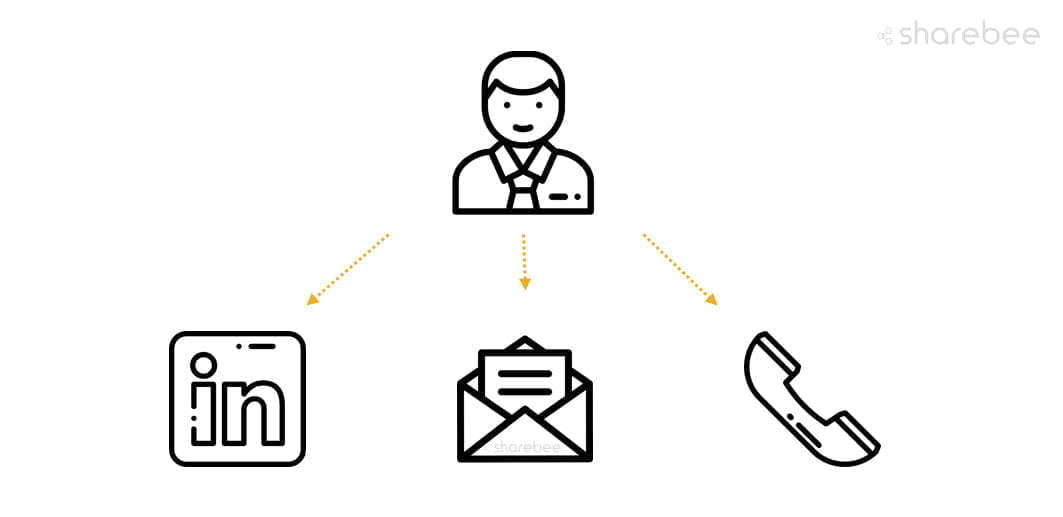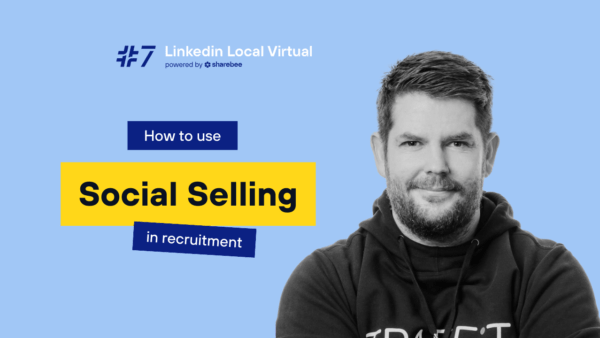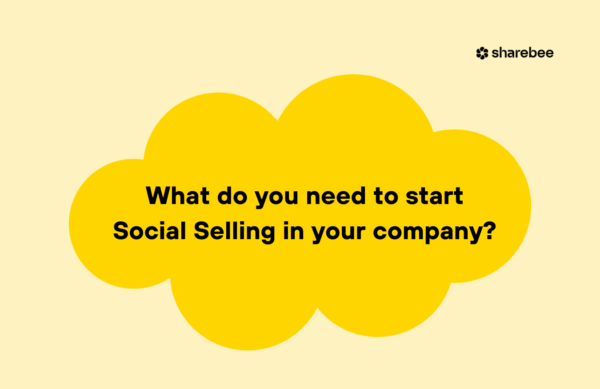Your employees are your power source on LinkedIn

How to make employees understand that today LinkedIn is a natural business tool, like a computer or a phone, that supports personal brand building and ultimately builds the company’s image. Check how to prepare your company and team to implement Employee Advocacy activities in your company.

 Many companies start their LinkedIn activities by creating a company page to post content related to the organization’s life, product news, awards, or job postings. Directions of this kind of actions are correct, but today they are not enough. The company’s page is often run by one person, the so-called page administrator, and largely only they know on which day of the week they will publish a post and of what content. However, the huge and unused potential of LinkedIn lies in the personal profiles of company employees, and they are the force that should not be overlooked. Why?
Many companies start their LinkedIn activities by creating a company page to post content related to the organization’s life, product news, awards, or job postings. Directions of this kind of actions are correct, but today they are not enough. The company’s page is often run by one person, the so-called page administrator, and largely only they know on which day of the week they will publish a post and of what content. However, the huge and unused potential of LinkedIn lies in the personal profiles of company employees, and they are the force that should not be overlooked. Why?
LinkedIn Statistics You Need To Know
To start with, a few key statistics:
- 72% of society trusts content posted on social media by friends and family.
Conclusion: we trust information published by employees more than CEOs, celebrities or celebrities.
(Source: Hootsuite)
- employees have 10 times larger social networks than company pages (source: LinkedIn 2016).
- sellers who regularly share high-quality content have a 45% greater chance of selling
- content shared by employees receives 8 times more engagement than content shared by company pages(źródło: Social Media Today2014)
The above statistics clearly indicate that professional implementation of LinkedIn in an organization brings many benefits for both the company and the employees themselves. So what should be done to convince the team to use LinkedIn on a daily basis and without coercion? How to engage employees not only in promoting content on the company profile, but also on personal profiles? And how to dispel any concerns about LinkedIn?
The answer may be the implementation of the Employee Advocacy program in the organization – promoting content related to our company through employees. How to do it?
Content
Engaging content that gives the audience value, builds an expert image, and ultimately sells.
People
Employees are the driving force for distributing company content. Experts work for the company’s image and outreach.
Tools (platform)
The place where sales and marketing come together and the content provider has a point of contact with its distributors. Allows you to reach your target audience with a power that is several times greater than a company page.
Engagement
Social Selling is a process, not a one-time sales action. A reward awaits for those who truly commit to it
The answer may be the implementation of the Employee Advocacy program in the organization – promoting content related to our company through employees. How to do it?
Employee Advocacy program – how to start?
Management support – before you start any activities, it is very important to receive support from as high a level as possible. The example comes from above, so it is worth having the support for the implementation of Employee Advocacy from people at the company’s management level. If it is the managers who are the pioneers or sponsors of the LinkedIn project, employees have more trust and are more willing to get involved in the activities.
Social media policy – another important step is to define the goals guiding the implementation of LinkedIn in the company. To define them, it is worth answering a number of the following questions in the organization:
- why should employees actually use social media in the company?
- who should we direct messages to?
- what form should the published content have? what language to use?
- what can employees write about the company?
- which data should not be disclosed?
- who in the company to contact for help with any questions?
The answers to these and other questions should be recorded in one mandatory document for employees to familiarize themselves with.
Strategy of actions – you should plan the strategy of actions – among others, choose ambassadors of the company – that is, such employees who will engage in LinkedIn activities, then plan a content marketing strategy. Conduct full training with LinkedIn and its features. Monitor and measure the actions taken.
Social media guide – it is also worth designing a guide from social media, in this case from LinkedIn, that is, a compendium of knowledge on how to prepare a personal profile. Such a mini guide will ensure that employees can reach the source of knowledge at any time and will not feel lost when editing their profile.
Reading the above points, you may get the impression that the implementation of LinkedIn is a large-scale project. And rightly so. Although it is worth starting with one team and then adding more. For the implementation to be effective, it is worth preparing for it properly. Despite the fact that there are 1-day implementation training courses on the market, my experience shows that a lot more work is needed to achieve professional results.
Social Selling on LinkedIn – practical guide
So how to prepare the implementation cycle of the LinkedIn project?
At Sharebee, we plan a “road map” for this purpose for organizations, we help prepare the strategy and then participate in its execution. The action map assumes several stages of implementation from communication of the project in the company, through distribution of materials, a cycle of 4 workshops, a cycle of development meetings, animation of actions on LinkedIn, checkpoint verifying assumptions measured in KPIs and content and sales actions conducted using the Sharebee platform.
Of course, it is possible to implement initiatives using the company’s internal resources. However, my experience suggests that such a project involves so many activities and areas, starting from internal communication, through the selection of sponsors and project owners, appointing and convincing a group to engage in social media activities, that it is worth leaving the substantive areas to LinkedIn experts. The experience and scope of arguments that professionals possess often helps to convince skeptics, and a practical demonstration of possibilities along with case studies “puts the final touch,” lighting the green light for the project’s start within the company.
It is worth remembering that professional implementation of the program will bring real and long-term benefits to both the organization and employees, who will be perceived as experts among their recipients.
Implementing LinkedIn in an organization – the most common mistakes
What are the most common mistakes when implementing LinkedIn in an organization?
I observe that companies often take actions on LinkedIn without:
- clearly defined goals they want to achieve,
- selected ways of posting and character of content on the LinkedIn platform,
- informing about their activities within the organization.
In such a situation, it is difficult to expect that employees will engage in activities they are unaware of, do not understand, or do not see their purpose.
In the FAQ below, I present good and bad practices of Employee Advocacy, which will help increase the effectiveness of actions and protect from mistakes made by others.
The biggest challenges with Employee Advocacy
The most frequently asked question – is it worth paying employees for building personal profiles, only for them to later go to the competition?
I very often come across objections from employers who fear that paying for building employees’ personal profiles and thus helping build an image of a specialist, will expose the organization to the risk of losing an employee to the competition.
In reality, investing in the Employee Advocacy program is an example of how to strengthen the employee’s ties with the company and help in employee development, by providing modern tools for conducting activities related to sales in a broad sense.
If the employer does not take these steps today for the sake of his company and team, the competitor will do so tomorrow, and the employee will have a reason to change their place of employment.
If you engage your employees in Employee Advocacy, it will pay off with a strong brand, but also with increased business and sales potential. Promoting employees’ knowledge positively impacts the perception of the company as an expert brand, which effectively influences the development of Social Selling in the company.
Employee Advocacy Program – best practices
Tips for launching Employee Advocacy program
- Choose a simple and effective tool that will help you implement Employee Advocacy
- Create a communication channel – it can be a group on LinkedIn or another channel through which employees can exchange ideas about new content. You can use email messages with regular reminders about publications for this.
- Give employees options and let them decide what they want to share
- Balance between content promoting the company and other content
- Help prepare graphics and other materials that can be placed on LinkedIn.
- If you are not using an Employee Advocacy tool, let all employees know where they can find materials they can use
- Carefully review the content before sharing it with employees. If you have designated content editors, they should control whether everything complies with social media policy rules and whether any data that could harm the company’s reputation are being shared.
- Share content that may have the best reach – analyze it, provide employees with necessary resources and support.
- Don’t let any of the current or new employees feel embarrassed.
- Make sure your employees have access to comprehensive guidelines such as Employee Advocacy operating guides
Ensure that employees know how to navigate the Employee Advocacy program and check the results of their actions and motivate, praise and encourage to action. Such programs often have a gamification system installed, which additionally motivates and encourages content publishing.
Avoid mistakes that are often made in Employee Advocacy programs
- Launching an EA program without a leader (program propagator) – Leaders often set a good example and motivate to action. Moreover, they can become mentors in transmitting rules to others.
- Limiting personal shares – Don’t forbid employees from posting their own content. Authenticity is one of the more important values today.
- Dictating what to share – Social media policy should describe the rules, but no one can force an employee what exactly and when to put on their profile. Even though it is worth adhering to the rules related to social media algorithms, it is worth leaving freedom to employees.
- Not making sure that the goal has been understood – it is worth reminding about participation in the program and informing about results, small changes and successes. There are many data that you can measure and analyze, and positive results always motivate.
- Suggesting to share only promotional content – it is worth remembering that 80% of the content we post should provide substantive value.
- Leaving the EA program without supervision – if the company decides to implement the Employee Advocacy program, it is worth ensuring that this process is planned and long-term.
- Interrupting the consistency of previously developed content Lack of regular monitoring and analysis of actions
- Forcing to participate – may have the opposite effect. No employee likes to act under duress.
- Introducing unhealthy competition – it is worth making sure what impact each engaged employee has on the team and its actions.



